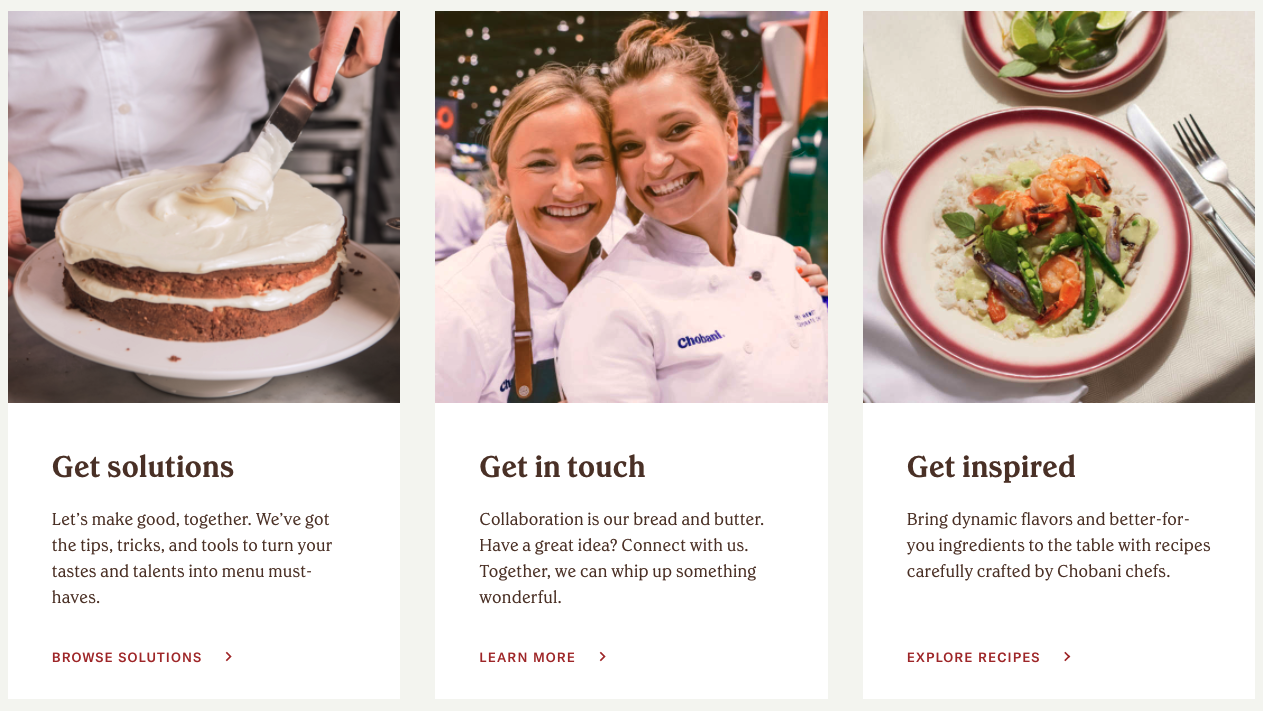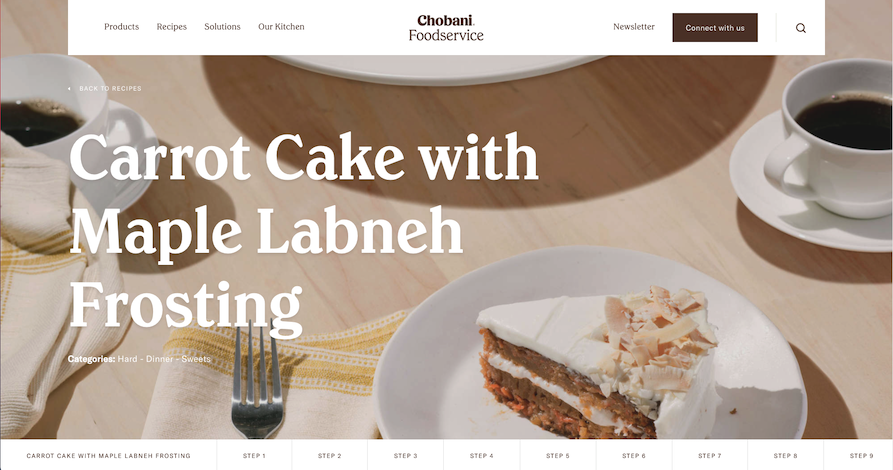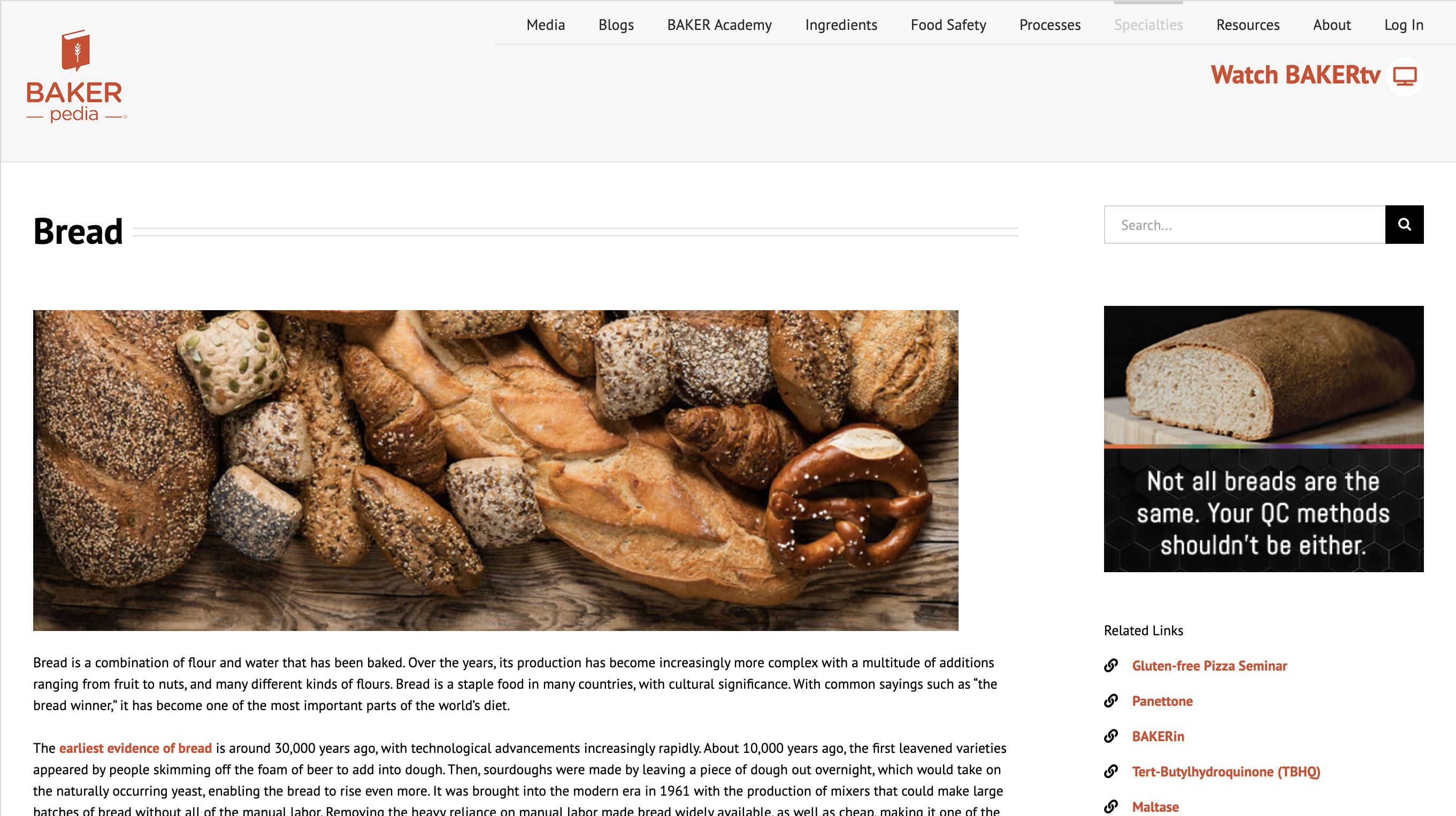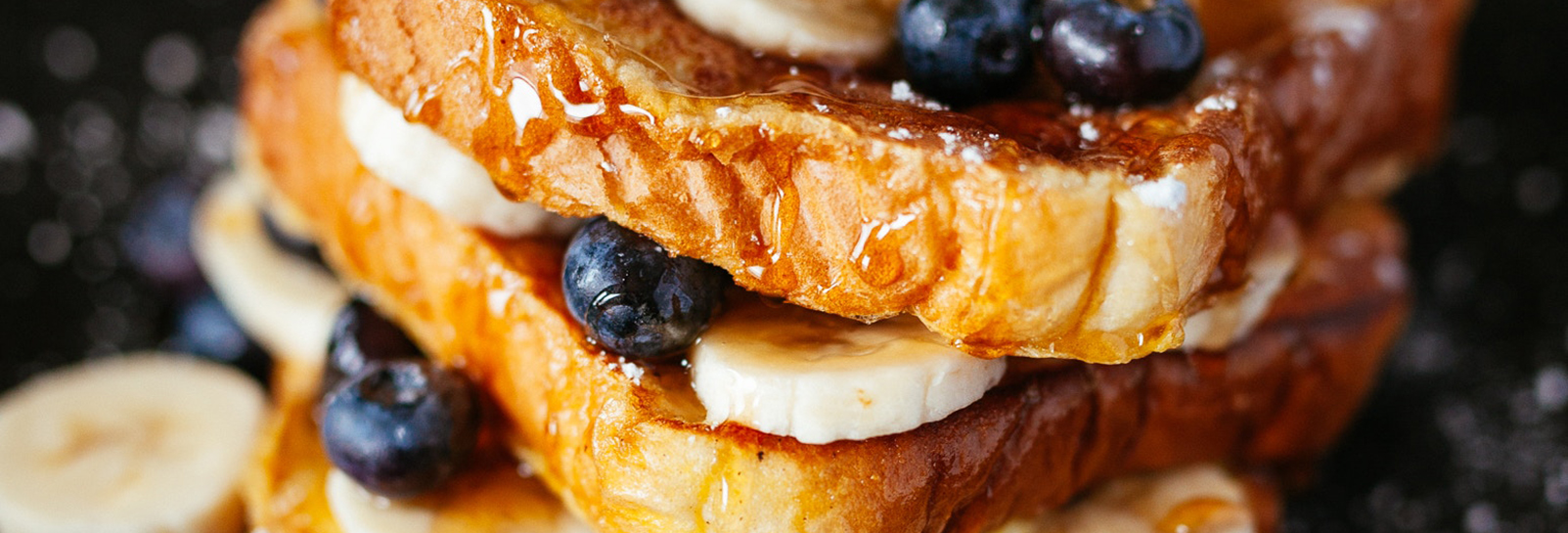Relationships between foodservice businesses and their vendors are never one and done. From fast food behemoths to independent artisans, decision-makers want to know you understand their business and have their back—B2B food marketing content that meets their needs for relevant information and inspiration does just that.
Here’s how you can too with three food brands that had us coming back for a second serving of strategy insights.
1. Keep your B2B food marketing user-friendly for a picture-perfect strategy
On Chobani’s home page stories—not products—appear first, luring in users with trendy dishes, interactive storytelling and high-quality photography.

Why it rocks: The Chobani folks know even food pros are susceptible to food porn. Their B2B food marketing site feels very B2C, but it works for their audience. The home page aims to inspire foodservice pros with menu items more and more consumers are craving: unique, health-minded food twists (carrot cake with maple labneh frosting, anyone?). Visitors can explore recipes, all of which include Chobani products, by difficulty level, course and dish type—functionality that’s so simple, it seems like an obvious choice. Yet few other digital B2B culinary resources match this experience.

Another user-friendly feature: Visitors can customize recipes by typing in their desired yield. The ingredient quantities adjust automatically. Seems simple, sure, but interactive tools like these shouldn’t be an afterthought. They help engage and educate visitors, which may explain why interactive content generates two times more conversions than passive content.
2. Diversify your content for a fluff-free B2B food marketing that’s accessible
As a food scientist, Lin Carson, Ph.D., identified a gap in centralized, reliable information-sharing in the baking industry. So she founded BAKERpedia—a digital knowledge resource for bakery pros.

Why it rocks: It has intuitive navigation. The site categorizes content like an encyclopedia, making information about ingredients, processes and recipes easy to find quickly—a time-saver for bakers seeking fluff-free facts fast. Going beyond a simple reference site, though, BAKERpedia supplements its definitions and explanations with a blog, a podcast, free baking fact sheets, gated e-books and more.
BAKERpedia also has diverse, but holistic, content. Its authors know not only what their audience members want, but also how they want it. Technical how-to’s are short and image rich, while scientific topics and industry news are approached with baker-nerd-speak that’s made digestible with short, simple sentences, visuals, bulleted summaries and the occasional dad humor (See BAKERpedia email subject lines like “You masa see this! ?,.”).
The connected microsite Eat Bread 90, where Carson documented her experience eating a whole loaf of bread each day for 90 days (Take that, Whole30!), recalls the main site’s geeky-fun feel. Carson similarly inserts her science smarts and arguments for ending the health war on bread into nerdy anecdotes about how her work “makes me shit rainbows.” Hopefully that’s not something all food scientists experience.
3. Offer readers balanced B2B food marketing content to keep them hungry for inspiration and insights
When it comes to serving up a well-balanced content mix that puts its audiences’ challenges and priorities first, Tyson Foodservice’s B2B Twitter account gets props.
Why it rocks: Sure, followers get fed a healthy dose of product promotion, but they’re also getting industry news and insights, menu ideas and inspiration from foodservice peers. The brand’s feed features stats about consumer preferences backed by reputable sources; live coverage of industry events; and links to recipes, business advice and thought leadership pieces.
Also worth noting is how Tyson Foodservice’s Twitter account effectively leverages curated content from trade and business publications by sharing articles from those sites. This demonstrates the business’s commitment to staying up to date on industry news and best practices, as well as its desire to keep its customers informed.




